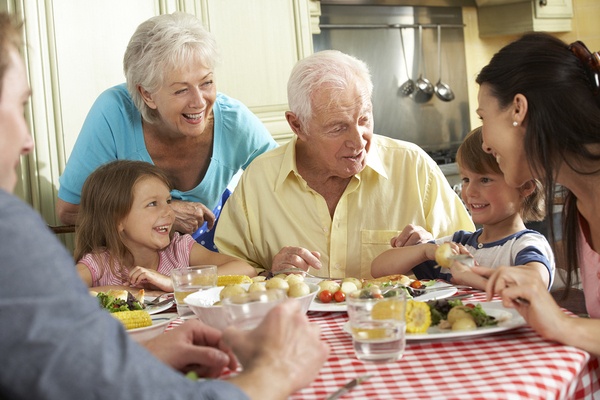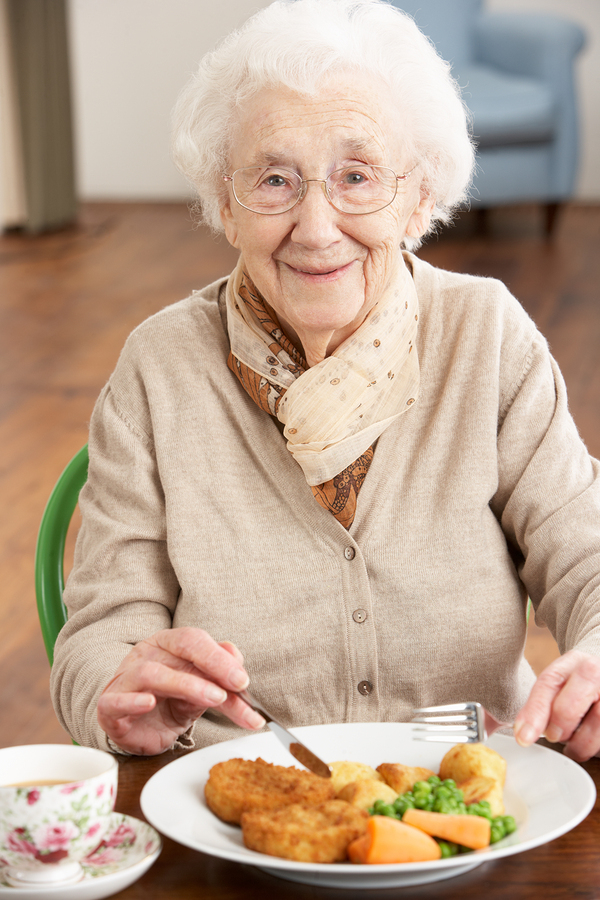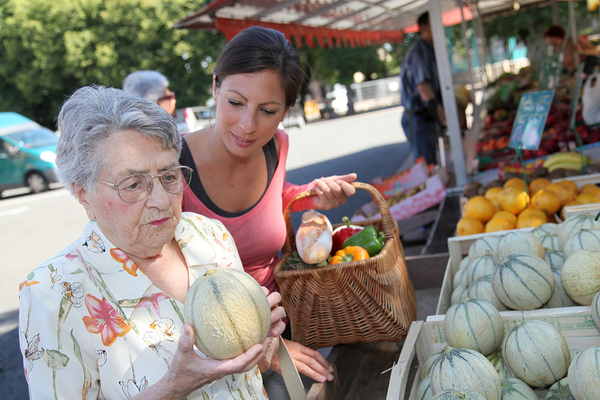More than 10 million older Americans face hunger every year, according to a first-of-its-kind report from Meals on Wheels. Hunger in Older Adults: Challenges and Opportunities for the Aging Services Network brings this critical problem to the forefront. Here’s a closer look at why so many seniors’ nutritional needs are going unmet, along with tips for caregivers aimed at helping ensure that seniors in their care are food secure.

Understanding the Numbers
“Hunger in Older Adults is intended to help expand access by eligible homebound older adults to available food assistance programs,” said Ellie Hollander, President and CEO of Meals on Wheels America. “What we quickly uncovered was that there is limited guidance available for those seeking to assist both homebound and ambulatory older adults in accessing needed food assistance.”
Indeed, the report unearths some troubling trends when it comes to seniors and nutrition. For starters, one out of six older adults in the U.S. faces the “threat of hunger” and the dire consequences that accompany it. In fact, Hunger in Older Adults reveals that food insecure seniors are 50 percent more likely to have diabetes; 60 percent more likely to have a heart attack or congestive heart failure; and 30 percent more likely to have at least one ADL impairment. Additionally, they are three times more likely to suffer from depression and two times more likely to report gum disease and asthma.

The report also addresses the prevalence of malnutrition among older adults. An equal opportunity affliction which can be found among seniors living independently or in a community, malnutrition occurs when the body isn’t getting the calories and nutrients it needs to stay healthy. According to Hunger in Older Adults, as many as 50 percent of seniors may be malnourished; Of these, roughly 33 percent end up being admitted to the hospital due to their malnutrition. All told, malnutrition among seniors can increase healthcare costs by a staggering 300 percent.
Risk Factors for Senior Hunger
Financial constraints are a large part of limited access to food among seniors. However, money is far from the only factor. The report identifies several other issues which impede seniors from obtaining, preparing and eating nutritious foods and/or participating in income and food assistance programs, including the following:
- Poor physical health
- Mobility limitations (particularly for homebound older adults)
- Lack of adequate transportation
- Cognitive and physical limitations
- Cultural preferences
- Lack of knowledge about appropriate food choices
Additionally, chronic health conditions and the rising cost of health care also contributes to hunger, food insecurity, and malnutrition among seniors.
Senior Nutrition Tips for Caregivers
Luckily, there are some things caregivers do to protect older adults from malnutrition, beginning with recognizing the signs and symptoms. While malnutrition can be tricky to spot, common indications may include weight loss, poor wound healing, dental difficulties, and easy bruising. Additionally, spending time with seniors routinely during meals can offer invaluable insights into their eating habits.

If you are concerned that an aging loved one may be suffering from malnutrition or hunger, check in with his/her healthcare team to identify if there are any underlying causes. Taking older adults shopping; stocking their fridges and pantries with tasty, nutrient dense foods; preparing portion-sized frozen meals; and turning meals into social occasions can all help ensure that seniors are eating right.
Furthermore, a number of resources exist aimed at supporting senior nutrition, including Meals on Wheels, the Supplemental Nutrition Assistance Program (SNAP), Feeding America, and the Senior Farmers’ Market Nutrition Program (SFMNP). For more information on these and other senior nutrition programs, check in with your local Area Agency on Aging.
A recent U.S. News and World Report article revealed that nearly 50 percent of older adults in wealthy Palm Beach County, Florida don’t have enough food to eat. The takeaway? While it may seem neither likely nor obvious, senior hunger and malnutrition are very much part of the reality in this country. The good news? Through increased awareness and proactive interventions, caregivers can play a vital role in reversing this trend.
mmLearn.org offers a large library of free videos for caregivers of older adults, covering topics pertaining to senior care. Whether you are a healthcare professional or a family caregiver, if you are caring for an older adult we know that you will find mmLearn.org an essential learning and guidance tool for all of your caregiver training needs. For more useful content for caregivers on senior nutrition and hundreds of other topics, access our database of free caregiver training videos today.
